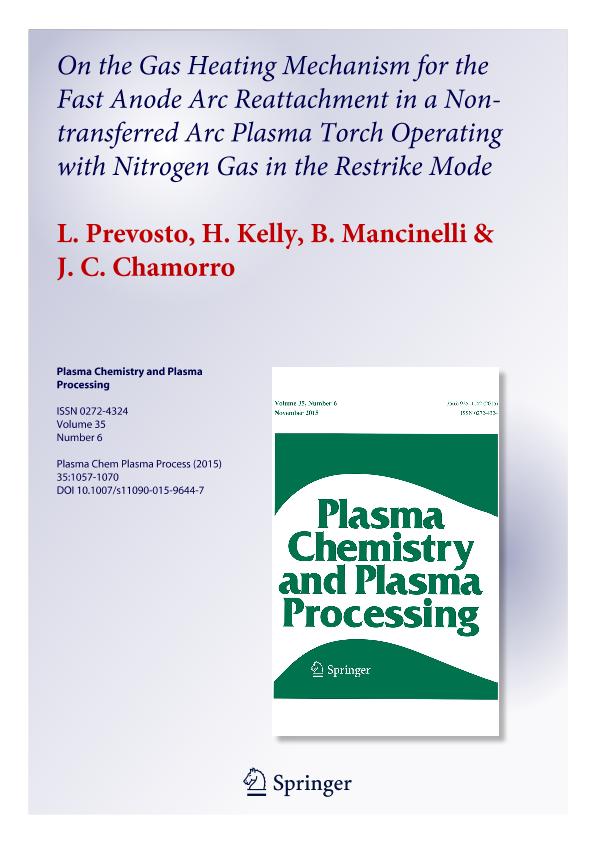Artículo
On the gas heating mechanism for the fast anode arc reattachment in a non-transferred arc plasma torch operating with nitrogen gas in the restrike mode
Fecha de publicación:
10/2015
Editorial:
Springer
Revista:
Plasma Chemistry And Plasma Processing
ISSN:
0272-4324
e-ISSN:
1572-8986
Idioma:
Inglés
Tipo de recurso:
Artículo publicado
Clasificación temática:
Resumen
The present work provides a detailed kinetic analysis of the time-resolved dynamics of the gas heating during the arc reattachment in nitrogen gas in order to understand the main processes leading to such a fast reattachment. The model includes gas heating due to the relaxation of the energy stored in the vibrational as well as the electronic modes of the molecules. The results show that the anode arc reattachment is essentiality a threshold process, corresponding to a reduced electric field value of E/N ~ 40 Td for the plasma discharge conditions considered in this work. The arc reattachment is triggered by a vibrational instability whose development requires a time of the order of 100 µs. For E/N < 80–100 Td, most of the electron energy is transferred to gas heating through the mechanism of vibrational–translational relaxation. For larger values of E/N the electronic–translational energy relaxation mechanism produces a further intensification of the gas heating. The sharp increase of the gas heating rate during the last few µs of the vibrational instability give rises to a sudden transition from a diffuse (glow-like) discharge to a constricted arc with a high current density (~107 A/m2). This sudden increase in the current density gives rise to a new anode attachment closer to the cathode (where the voltage drop between the original arc and the anode is the largest) thus causing the decay of the old arc spot.
Palabras clave:
Plasma Torch
,
Restrike Mode
,
Nitrogen
,
Gas Heating
Archivos asociados
Licencia
Identificadores
Colecciones
Articulos(INFINA)
Articulos de INST.DE FISICA DEL PLASMA
Articulos de INST.DE FISICA DEL PLASMA
Citación
Prevosto, Leandro; Kelly, Hector Juan; Mancinelli, Beatriz Rosa; Chamorro, J. C.; On the gas heating mechanism for the fast anode arc reattachment in a non-transferred arc plasma torch operating with nitrogen gas in the restrike mode; Springer; Plasma Chemistry And Plasma Processing; 35; 6; 10-2015; 1057-1070
Compartir
Altmétricas




